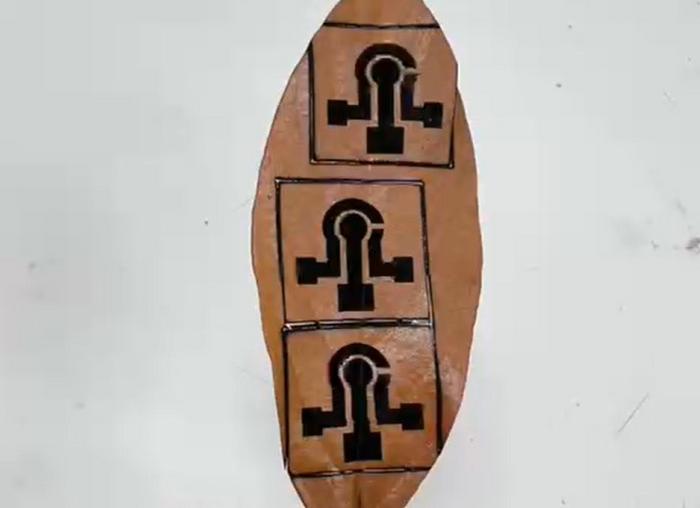Fabrication of sensors by 3D printing combines speed, freedom of design, and the possibility of using waste as a substrate. Various results have been obtained in a circular economy mode, whereby residues usually thrown away are instead used as low-cost resources.

Credit: Bruno Janegitz
Fabrication of sensors by 3D printing combines speed, freedom of design, and the possibility of using waste as a substrate. Various results have been obtained in a circular economy mode, whereby residues usually thrown away are instead used as low-cost resources.
A highly creative solution involving the printing of electrochemical sensors on fallen tree leaves has now been presented by a team of researchers in Brazil led by Bruno Janegitz, a professor at the Federal University of São Carlos (UFSCar) and head of its Laboratory for Sensors, Nanomedicines, and Nanostructured Materials (LSNANO), and Thiago Paixão, a professor at the University of São Paulo (USP) and head of its Electronic Tongues and Chemical Sensors Lab (L2ESQ).
The initiative was supported by FAPESP and highlighted in an article published in the journal ACS Sustainable Chemistry & Engineering.
“We used a CO2 [carbon dioxide] laser to print the design of interest on a leaf by means of pyrolysis and carbonization. We thereby obtained an electrochemical sensor for use in determining levels of dopamine and paracetamol. It’s very easy to operate. A drop of the solution containing one of these compounds is placed on the sensor, and the potentiostat to which it’s coupled displays the concentration,” Janegitz said.
Simply put, the laser beam burns the leaf in a pyrolytic process that converts its cellulose into graphite, and the graphite body is printed on the leaf in a shape suited to functioning as a sensor. During the fabrication process, the parameters of the CO2 laser, including laser power, pyrolysis scan rate and scan gap, are systematically adjusted to achieve optimal outcomes.
“The sensors were characterized by morphological and physicochemical methods, permitting exhaustive exploration of the novel carbonized surface generated on the leaves,” Janegitz said.
“Furthermore, the applicability of the sensors was confirmed by tests involving the detection of dopamine and paracetamol in biological and pharmaceutical samples. For dopamine, the system proved efficient in a linear range of 10–1,200 micromoles per liter, with a detection limit of 1.1 micromole per liter. For paracetamol, the system worked well in a linear range of 5-100 micromoles per liter, with a detection limit of 0.76.”
In the tests involving dopamine and paracetamol, conducted as proof of concept, the electrochemical sensors derived from fallen tree leaves attained a satisfactory analytical performance and noteworthy reproducibility, highlighting their potential as an alternative to conventional substrates.
Substituting fallen tree leaves for conventional materials yields significant gains in terms of cost-cutting and above all environmental sustainability. “The leaves would have been incinerated, or at best composted. Instead, they were used as a substrate for high value-added devices in a major advancement for the fabrication of next-generation electrochemical sensors,” Janegitz said.
About São Paulo Research Foundation (FAPESP)
The São Paulo Research Foundation (FAPESP) is a public institution with the mission of supporting scientific research in all fields of knowledge by awarding scholarships, fellowships and grants to investigators linked with higher education and research institutions in the State of São Paulo, Brazil. FAPESP is aware that the very best research can only be done by working with the best researchers internationally. Therefore, it has established partnerships with funding agencies, higher education, private companies, and research organizations in other countries known for the quality of their research and has been encouraging scientists funded by its grants to further develop their international collaboration. You can learn more about FAPESP at www.fapesp.br/en and visit FAPESP news agency at www.agencia.fapesp.br/en to keep updated with the latest scientific breakthroughs FAPESP helps achieve through its many programs, awards and research centers. You may also subscribe to FAPESP news agency at http://agencia.fapesp.br/subscribe.
Journal
ACS Sustainable Chemistry & Engineering
DOI
10.1021/acssuschemeng.3c06526
Article Title
Green Fabrication and Analytical Application of Disposable Carbon Electrodes Made from Fallen Tree Leaves Using a CO2 Laser
Article Publication Date
13-May-2024




